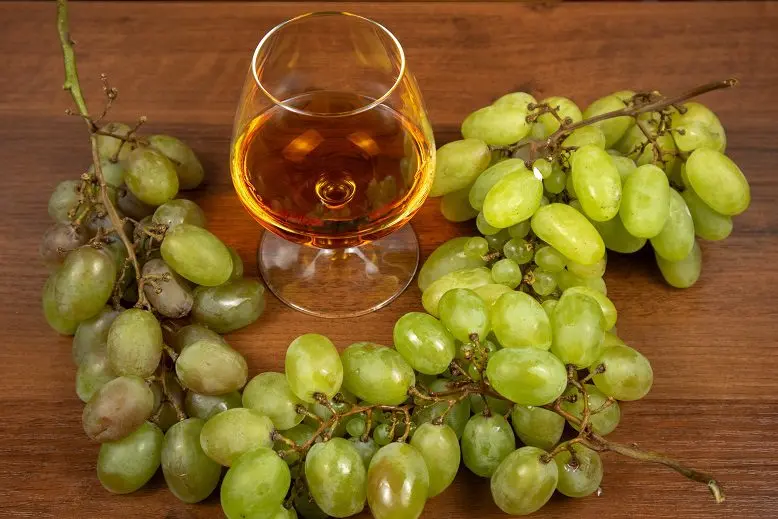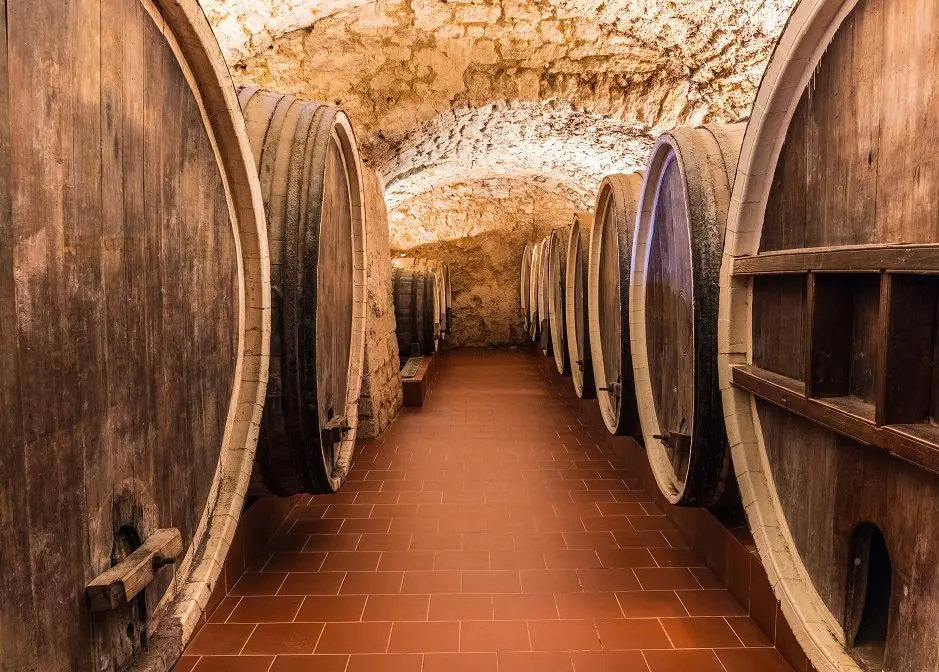The production of cognac is a complex long process that requires special grape varieties, unique equipment and craftsmen who are able to accurately observe all technological nuances. Next, I will talk about the stages that real French cognac goes through before getting on the shelves.
Cognac technology is controlled at the level of French legislation, it is allowed to be produced only in one geographical region of the country – Poitou. All drinks created in other regions and countries are not cognac, they are called grape brandy.
Stages of cognac production
1. Growing grapes. According to the classical technology, the following grape varieties are allowed to be used: Folle Blanch, Ugni Blanc and Colombard. But in the vast majority of cases, Ugni Blanc is used; 98% of cognacs are made from this grape variety.
The grapevine is planted in rows at a distance of three meters from each other. This allows the use of special machines for harvesting, which reduces the share of manual labor and reduces the cost of production. Cognac houses begin cleaning in mid-October.

2. Getting juice. All harvested grapes are immediately sent under special presses, which only slightly crush the berries. At the legislative level, it is forbidden to use continuous screw presses that can squeeze the berries dry.
3. Fermentation. The juice obtained at the previous stage is immediately sent for fermentation. This process takes place in special containers with a volume of 50-200 hectoliters. In this case, it is strictly forbidden to add sugar.
The manufacturer has the right to add only antiseptics to the juice – antioxidants and sulfur dioxide. The maximum amount of these substances is also regulated. Control over fermentation is especially strict, since the quality of the finished cognac largely depends on this stage.
As a result of fermentation, unfiltered and non-clarified dry wine (sugar content less than 1 g/l) is obtained, which is stored on its own yeast sludge before distillation. This wine contains a lot of acid and little alcohol (no more than 8-9% of the volume).
4. Distillation. The cognac house is obliged to complete the distillation process by March 31 of the year following the year of harvest. The following requirements are put forward:
- distillation should be carried out only within the boundaries of a certain geographical area;
- you can only use special copper stills called alambiks (in the figure), which must be registered before use.

Before serving in alambic, the wine is preheated. Distillation is carried out in two stages. First, the wine is simply distilled in order to get the maximum possible amount of alcohol. A milky liquid containing 27-32% alcohol comes out. In the language of manufacturers, this substance is called “brouillis” (brui).
The purpose of the second distillation is to obtain pure cognac spirit and fractionate volatile substances. At this stage, the initial output of the distillate (the so-called “head”), which contains many harmful volatile substances, is cut off. Next, the master collects the “body” – a fraction containing 69-72% alcohol, which will go to the production of cognac.
After the concentration of alcohol is reduced to 60%, the distillation is completed, the rest of the fraction is called the “tail”. It is not used in the preparation of cognac, but the “tail” is allowed to be added to the next batch of bruyi.
It takes about 24 hours to distill one batch of cognac. From 10 liters of young wine, you can get up to 1 liter of pure cognac spirit.
5. Exposure. The aging process of cognac spirits lasts at least 30 months, and the age of the oldest spirits can be more than 100 years. Cognac is placed in oak barrels that do not have metal parts, it is also forbidden to use glue-based compounds. Therefore, the price of real oak barrels for cognac is very high.
For barrels, oak is at least 150 years old. Before using the finished barrel, it must be kept in the fresh air for 5 years.
During aging in barrels, substances that form the color and aroma of the drink pass into cognac spirit from wood. Barrels are allowed to be used repeatedly.
For each year of aging, 0,5% of alcohol evaporates, the masters call this the “angels’ share”. In fact, the evaporated alcohol is fed by bacteria living on the walls of the cellars. For 50 years of aging, the cognac strength decreases from 71% to 46%, but the alcohol itself becomes darker and has a unique bouquet of aromas.

6. Blending (assemblage). It involves mixing alcohols of different aging to obtain a finished drink that will go on sale. If further aging of cognac is impractical, it is poured into glass bottles, braided with a vine.
7. Adding other ingredients. Cognac production can do without this stage, but in most cases it is still present. Distilled water is added to the cognac to adjust the strength, sugar (maximum 3,5% by volume) to adjust the taste, oak chips and caramel to give the cognac a rich dark color. The drink is bottled, labeled and it goes on sale.









